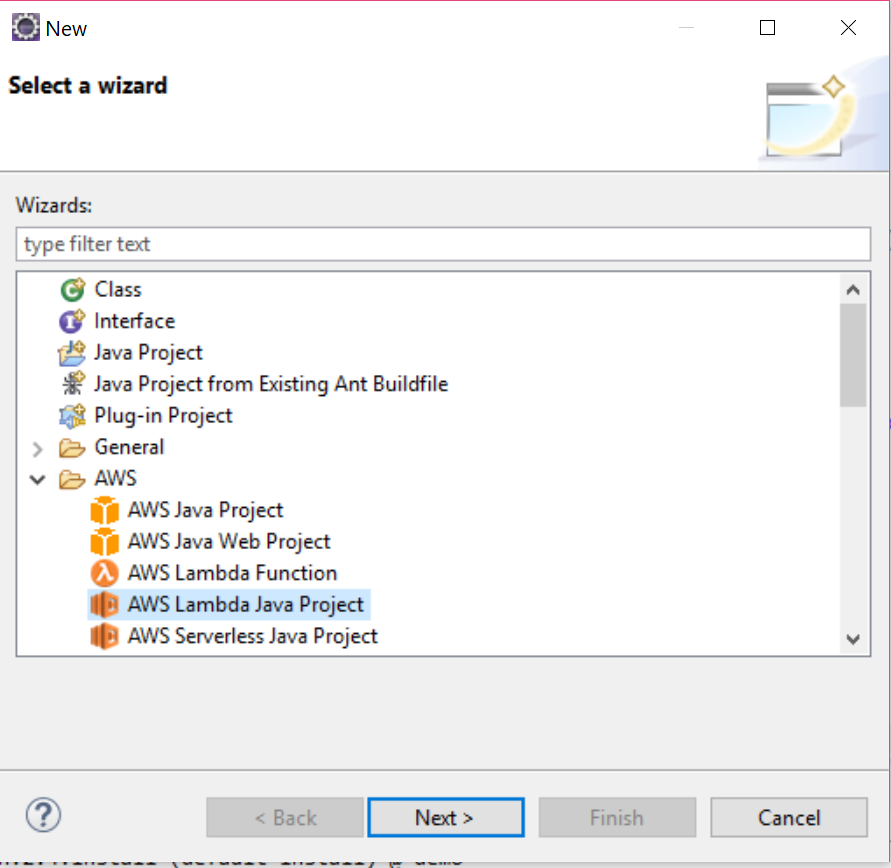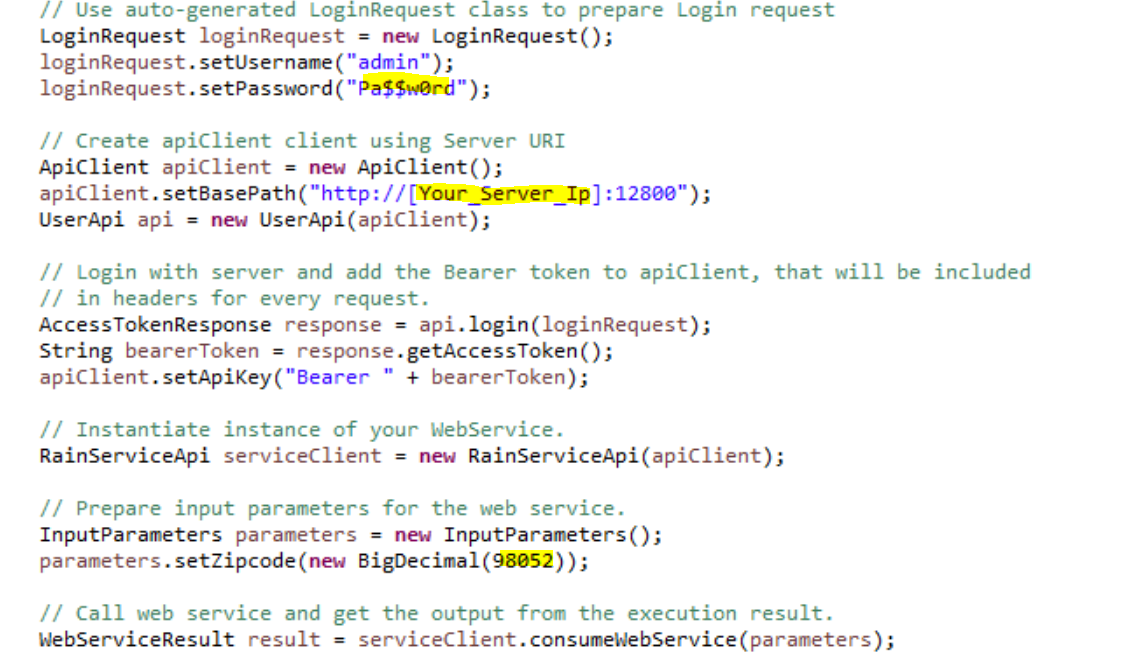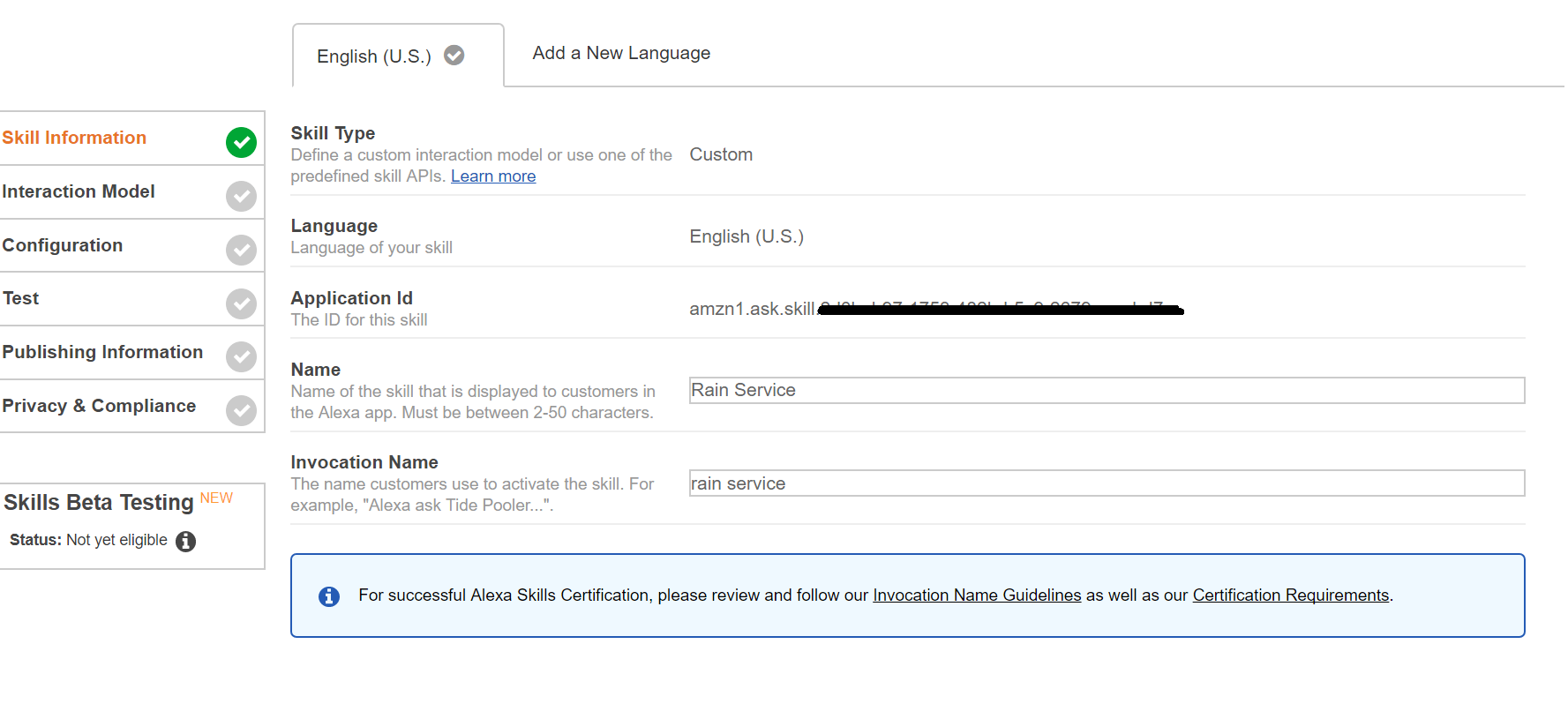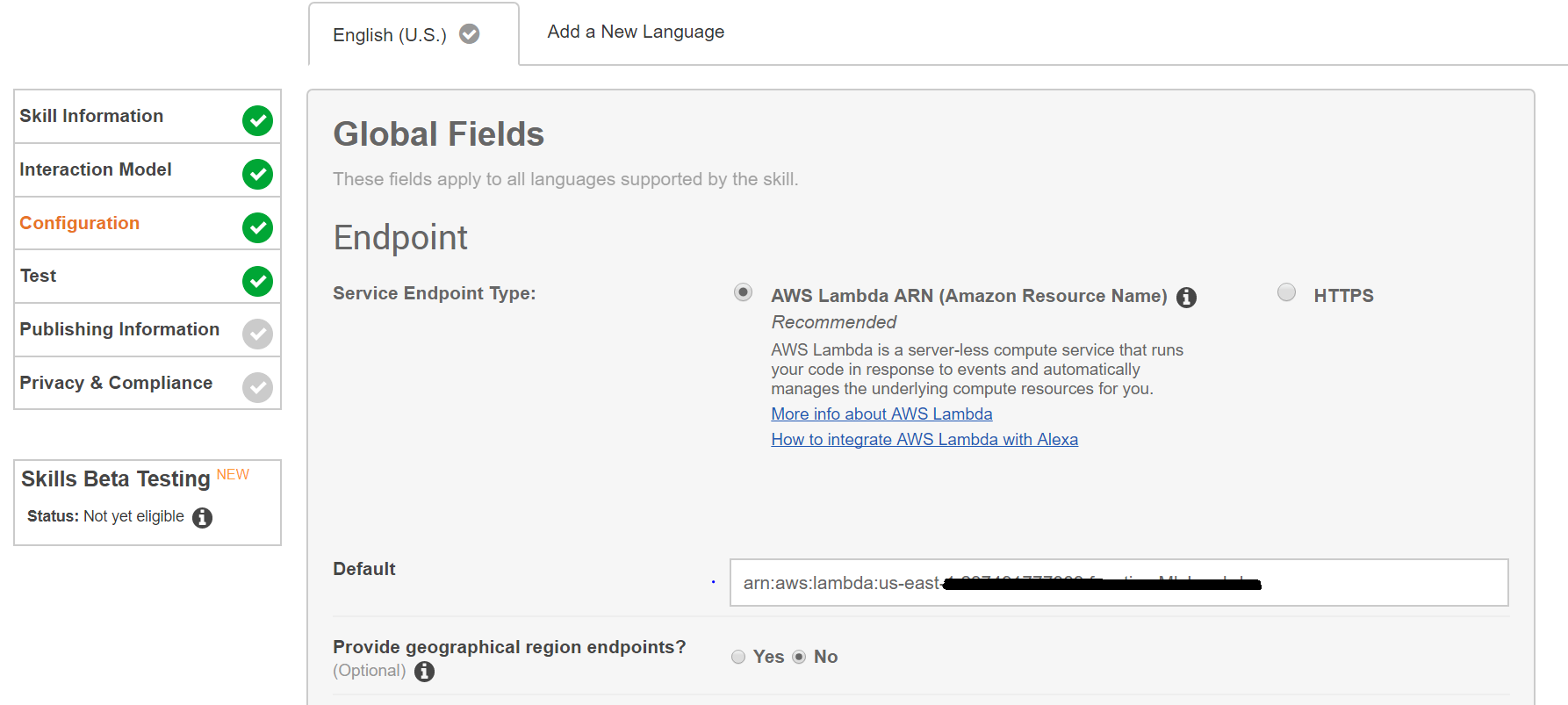Note
Access to this page requires authorization. You can try signing in or changing directories.
Access to this page requires authorization. You can try changing directories.
In my previous blog, I talked about creating Enterprise-friendly Java clients for Machine Learning Server web-services. In this blog, we will see how easily we can extend this Java client to (1) work with Amazon's AWS Lambda function and (2) call this lambda function from a Amazon's Alexa skill.
For this demo, I will assume that you have published a 'rainService' prediction service that takes a zipcode and returns a percentage number for rain prediction for that day. Here is how the swagger for our service looks. You can also find the code here: AWS Lambda-Alexa-enabled Java client for rainService.

1. Java Client with AWS Lambda function:
Install AWS Lambda SDK/ toolkit for your IDE. I used this for eclipse: https://docs.aws.amazon.com/toolkit-for-eclipse/v1/user-guide/lambda.html
Create an AWS Lambda Java project

Make sure you select Input trigger as type "Custom"

Download swagger client for our service's swagger from https://editor.swagger.io. Extract the zip and copy the "io" folder under your Lambda project we just created.
Edit the handleRequest() method to login to Machine Learning Server, and get response from web server


Let's go ahead and build this project by running "maven install" in your IDE/command line. This will generate the JAR for your project.
You can now login to https://console.aws.amazon.com/lambda, create your lambda function and upload the JAR.
Congratulations! You have successfully used the Machine Learning Server 'web-services' from an AWS lambda function.
2. Use Machine Learning Server web service with Amazon's Alexa:
We can extend the Java client generated from step 1 to handle inputs from Amazon Alexa skill.
- We will follow steps https://developer.amazon.com/docs/custom-skills/handle-requests-sent-by-alexa.html and create 2 additional classes MySpeechlet.java and MlsDemoHandler.java. These will help us process the inputs from Alexa skill.
- Okay, our backend is now ready to handle requests from Alexa skill. Let's setup the Alexa skill now on https://developer.amazon.com/edw/home.html#/skills
- Enter Skill name and invocation details.

- Save changes and copy the Application ID. You will need to copy this to your MlsDemoHandler.java class.

- Let's recompile the Java client and upload the updated JAR file to our lambda function from step 1.
- Continue making changes to the Alexa skills:

- Specify the lambda function's ARN identifier in the Alexa skill as shown below.

- We now test the skill on next screen:

- At this stage, if your Alexa device is registered under same Amazon account, you can also test using your actual device.
- Congratulations! You have successfully used Microsoft's Machine Learning Server web-service from your Amazon Alexa skill :) if you wish, you can go ahead and publish the skill for all Amazon Alexa users.
I am excited to see all the things that you can achieve using Microsoft Machine Learning Server to make your Alexa skills smarter! Happy coding :)